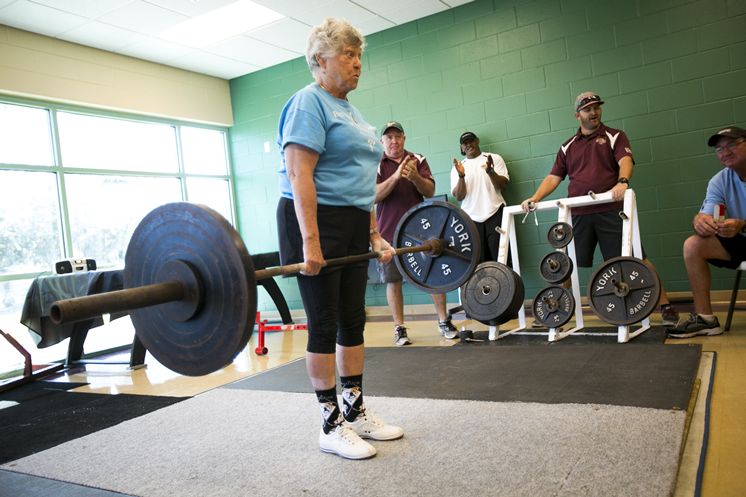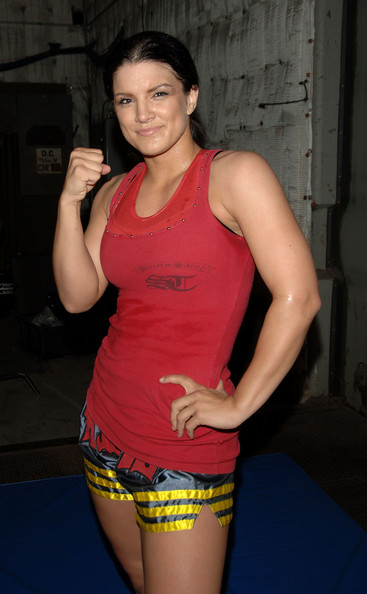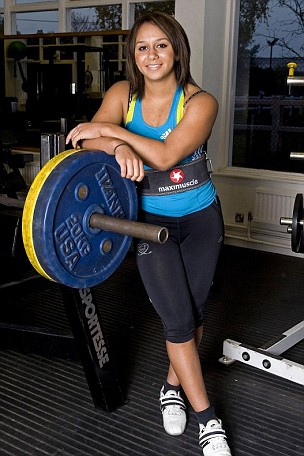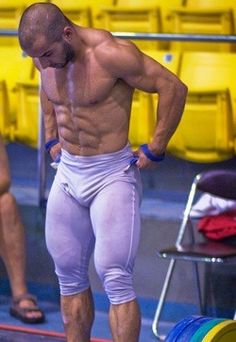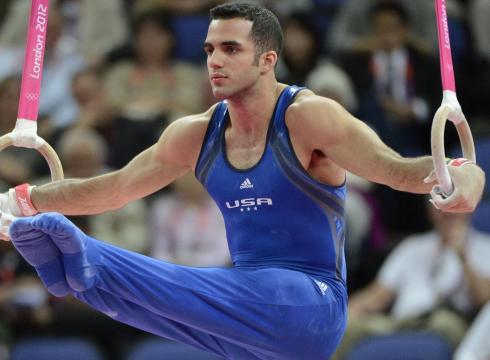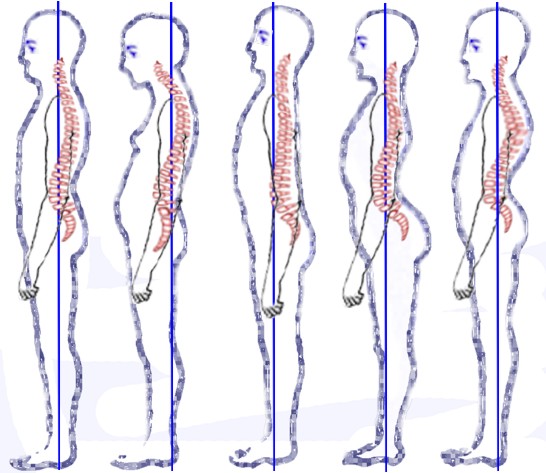I’m a big fan of the military press (aka the press, the standing press, the overhead press). I like putting the weight overhead. It’s a challenging total-body exercise that in my mind probably delivers more useful strength and skill than something like a bench press. I’d like to press 200 lbs. which is my body weight. For that reason, I tend to lift heavy and I typically don’t go above five reps per set. My progress stalled for a while so I went on the hunt for ways to move it along. This led me to read up on all kinds of interesting ways to break through plateaus. (Admittedly, a torn ACL didn’t help my pressing. My press was slowing down though prior to the tear.)
To get stronger we generally need to add weight to whatever it is that we’re lifting. This is the simplest, most obvious way to get stronger. It’s inevitable though that at some point our progress will slow and we’ll have to find other ways to move forward in our strength training. Here are a few methods I’ve used to improve my press:
- Weight: A lot of people tend to lift in the same rep range. I often see people in commercial gyms lifting in the 10-15 rep neighborhood. A good way to make progress is to add weight and move down in reps. The 5-rep and below range is good for getting stronger. In contrast, if we’ve been lifting in the low-rep range, there might be a benefit to reducing weight and adding reps.
- Speed: We can subtract weight and move faster. To get fast we need to move fast. If we reduce the weight (40%-60% of your 1-rep max) and move very fast then we get a very different type of powerful stimulus to the muscles. I’ll talk about this more below.
- Different exercises and movement patterns: If progress stalls on the barbell military press then we might want to switch to an incline barbell press, or a dumbbell military press, or a seated military press, or a behind-the-neck press. You see my point? Choosing an exercise that’s the “same but different” can help us make progress in our main lift.
- Bring up weak points: I’m not much of a fan of bodybuilding-type training in which individual muscles are emphasized. That’s not to say there isn’t a place for this approach. If we look at the particular muscles involved in a given lift then we might use exercises to isolate those muscles and make them stronger and/or add mass. For instance, we could use tricep extensions in order to strengthen that piece of our press. Similarly, we might look at supporting musculature–the upper back for instance–and target those muscles to a stronger foundation from which to press.
Here’s some more on my experience with dynamic effort, “same but different” and some bodybuilding work.
Dynamic Effort
Speed and strength live in the same house. They are very close acquaintances. They have a lot of physiological similarities. Training one tends to help the other. Fast twitch muscle fibers are our strong and fast fibers. They should be trained with heavy weights as well as high velocities.
As we add weight to the bar, the bar slows down. We create more force but we don’t create speed. If we want to train speed then we need to lighten the load considerably and move a lot faster. The Westside Conjugate Method addresses both strength and speed during the week. Max Effort (ME) day has lifters lifting very heavy weights and generating a lot of force but at a slow velocity. Dynamic Effort (DE) day has the lifter using much lighter loads moved at a high velocity. This creates explosion.
Incorporating a dynamic effort day into your lifting may help you break through any current plateaus you may be experiencing. If you’ve never employed the DE method, then you probably have a nice well of untapped potential and you’ll likely see impressive results fairly quickly.
I’ve from pressing 135 lbs. for 2 reps to 145 lbs. for 3 reps in about four weeks since incorporating the DE method. Cool! As advocated by Louie, the DE day came 72 hours after the ME day. I typically did 10 sets of 2 reps, adding 5 lbs. each week.
At no time did I become anything like exhausted by the DE work. That isn’t the point. Speed is the point. If you get tired then you’ll slow down. Don’t expect to experience a typical workout feeling with DE work.
Louie wrote an article titled Westside Military Press Training for Mike Mahler’s Aggressive Strength site. Here are the tips:
- Do the seated press with dumbbells. Choose three weights for example 100 lbs, 75 lbs, and 50 lbs. Work on setting a repetition record with one dumbbell weight. the reps should range from 10 to 25 reps.
- Do dumbbell extensions or barbell extensions for special work along with rear, side and front raises.
- Do barbell pressing in the following manner. Ten sets of three reps in a three- week wave. 70% the 1st week 75% the second week and 80% the third week. Pendulum back to 70% and start over. Second day 72 hours later do max effort work.
- Use chains on the bar or JUMPSTRETCH bands to accommodate resistance. (Editor’s note: Usually as the bar gets close to lockout you will naturally slow the bar down. The bands keep the resistance on all the way to the end).
- Work up to new PR in the incline press.
- Do rack lockout work on the high pin where 10%-15% highest weight can be done.
Developing the Overhead Press is another good article on Mahler’s site. If you like to press then read it!
The Conjugate System can get a little complicated and hard to understand. For a very good and concise explanation of the system, check out Jordan Syatt’s article The Westside Conjugate System: A User’s Guide.
Other ways to train speed (either lower or upper body) include the following:
- jumping
- medicine ball throws
- plyometric pushups
- power pull-ups: Do these explosively for 1-3 reps.
Same but different
I’ve varied the way I press–but I’ve kept pressing. In the book Easy Strength, Pavel Tsatsouline talkes about the “same b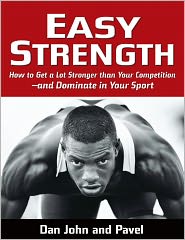
A similar process is proposed by Bill Starr in the book the Strongest Shall Survive. This system employs a heavy/light/medium approach to lifting where the exercises are changed slightly between each workout. For example, the back squat is used on the heavy and medium days and the front squat is used on the light day. Presses alternate from the bench press to the military press to the behind-the-neck press. Read the book to learn more.
In my case, I’ve incorporated the standing behind-the-neck press as well as seated dumbbell or kettlebell presses in which I sit on the floor with my legs straight out in front. I do these for reps.
Here are some examples “same but different” changes we could incorporate into our press routine
- military press to behind-the-neck press to incline press
- standing press to seated press
- handstand or incline pushups
- dumbbells and/or kettlebells in place of the barbell
Other things
I’ve also incorporated back-off sets after my heavy pressing days. I reduce the weight considerably and press for 10-12 reps. I expect this to help build some mass.
I’ve used dumbbell rear delt flyes to help build my upper back. I do these for 8-15 reps typically and I vary the weight each workout. This is the type of bodybuilding isolation work that I haven’t done in years.
Finally
I’ve just scratched the surface with this stuff so I anticipate continued progress. As my ACL heals I expect progress to accelerate quite a bit. This has been a very interesting process. I’ve enjoyed learning about and applying these concepts, particularly the dynamic effort work. I just recently started a little bit of jumping. I expect this to help my squat and deadlift. I plan to keep a speed day as part of my workout plans.


